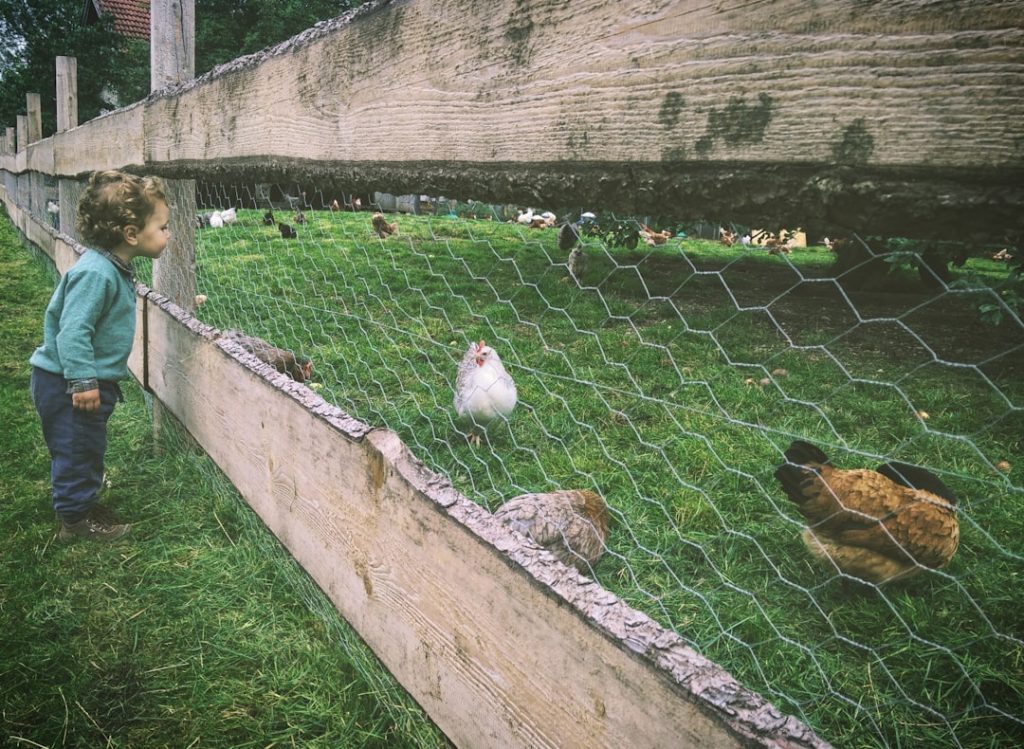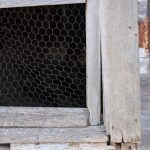Chickens are social animals with natural foraging instincts and a curious nature. They are attracted to new objects and areas, making it essential to understand their behavior for effective management and control. Recognizing their natural tendencies helps anticipate their movements and preferences.
Chickens follow daily routines and patterns in their activities, including feeding, roosting, and exploring. Observing these patterns over time can inform strategies for implementing deterrents or distractions. For instance, identifying areas where chickens frequently gather can guide the placement of physical barriers or alternative attractions.
These birds are easily startled by sudden movements or loud noises, which can be utilized as a deterrent method. Creating unexpected disturbances in areas where chickens are unwanted can train them to avoid those spaces. Additionally, chickens have a strong social hierarchy within their flock, typically following the lead of dominant members.
Understanding these social dynamics can aid in training and supervising chickens to remain within designated boundaries or avoid specific areas.
Table of Contents
- 1 Creating Physical Barriers
- 2 Using Natural Deterrents
- 3 Implementing Repellents
- 4 Providing Alternative Distractions
- 5 Training and Supervising the Chickens
- 6 Seeking Professional Help
- 7 FAQs
- 7.1 What are some natural ways to keep chickens out of my flower garden?
- 7.2 Are there any commercial products available to keep chickens out of my flower garden?
- 7.3 Is it safe to use chicken wire or fencing to keep chickens out of my flower garden?
- 7.4 What are some chicken-resistant plants that I can plant in my flower garden?
- 7.5 Are there any potential drawbacks to keeping chickens out of my flower garden?
Key Takeaways
- Chickens are naturally curious and will explore their surroundings, so understanding their behavior is key to preventing them from causing damage.
- Creating physical barriers such as fences and netting can effectively keep chickens away from certain areas or plants.
- Using natural deterrents like predator decoys, reflective objects, or strong-smelling plants can help keep chickens at bay.
- Implementing repellents such as sprays or powders can discourage chickens from damaging specific areas or plants.
- Providing alternative distractions like scratching posts or designated foraging areas can redirect chickens’ natural behaviors away from destructive activities.
- Training and supervising chickens can help reinforce boundaries and discourage destructive behavior.
- Seeking professional help from a veterinarian or animal behaviorist may be necessary for persistent or severe chicken behavior issues.
Creating Physical Barriers
Choosing the Right Barrier
When creating physical barriers, it’s essential to consider the size and agility of the chickens, as well as their ability to fly short distances. For example, a simple low fence may be sufficient for a small flock of non-agile chickens, while taller fencing or netting may be needed for larger or more agile flocks.
Temporary and Permanent Barriers
In addition to traditional fencing, there are other physical barriers that can be used to control the movement of chickens. Chicken wire can be used to create temporary enclosures or barriers that can be moved around as needed. This can be particularly useful in areas where you want to temporarily restrict the chickens’ access, such as around newly planted gardens or sensitive landscaping. Physical barriers can also include structures such as chicken coops or shelters that provide a designated area for the chickens to roost and forage, while keeping them contained and away from other areas.
Chicken Tunnels and Mazes
Another effective physical barrier for controlling the movement of chickens is the use of chicken tunnels or mazes. These structures can be designed to guide the chickens in specific directions or keep them contained within a certain area. By creating a maze-like structure with food or treats at the end, you can train the chickens to follow a specific path and avoid other areas.
Overall, creating physical barriers is an effective way to control the movement of chickens and keep them out of certain areas.
Using Natural Deterrents

In addition to physical barriers, natural deterrents can also be used to control the movement of chickens and keep them away from certain areas. Natural deterrents take advantage of the chickens’ natural instincts and senses to discourage them from going where they are not wanted. One common natural deterrent is the use of predator scent or urine, which can be strategically placed around areas where you want to keep the chickens away.
The scent of predators can trigger the chickens’ instinctual fear response and discourage them from venturing into those areas. Another natural deterrent that can be used to control the movement of chickens is the use of reflective surfaces or objects. Chickens are easily startled by sudden movements or bright lights, so by strategically placing reflective objects or surfaces in areas where you don’t want them to go, you can effectively deter them from entering those spaces.
This can include using reflective tape, mirrors, or other shiny objects that catch the sunlight and create a visual deterrent for the chickens. Furthermore, natural deterrents can also include the use of certain plants or herbs that are known to repel chickens. For example, planting strong-smelling herbs such as lavender, mint, or rosemary around sensitive areas can help deter chickens from entering those spaces.
Additionally, certain plants such as marigolds are known to have natural insect-repelling properties, which can also help keep chickens away from specific areas. Overall, using natural deterrents is an effective way to control the movement of chickens and keep them out of certain spaces.
Implementing Repellents
In addition to natural deterrents, there are also commercial repellents that can be used to control the movement of chickens and keep them away from specific areas. These repellents are specifically designed to discourage chickens from entering certain spaces by using scents or tastes that are unappealing to them. One common type of commercial repellent is the use of bitter-tasting sprays or gels that can be applied to surfaces where you want to deter the chickens from going.
The unpleasant taste will discourage the chickens from pecking or exploring those areas. Another type of commercial repellent that can be used to control the movement of chickens is the use of motion-activated sprays or sound devices. These devices are designed to startle the chickens with sudden bursts of water or loud noises when they enter certain areas.
This can effectively train the chickens to avoid those spaces and stay within designated boundaries. Additionally, there are also electronic repellent devices that emit high-frequency sounds that are unpleasant for chickens but not harmful to humans or other animals. Furthermore, there are also granular or liquid repellents that can be applied to specific areas to discourage chickens from entering.
These repellents often contain natural ingredients such as garlic, pepper, or other strong-smelling substances that are unappealing to chickens. By strategically applying these repellents around sensitive areas, you can effectively control the movement of chickens and keep them away from those spaces. Overall, implementing commercial repellents is an effective way to control the movement of chickens and keep them out of specific areas.
Providing Alternative Distractions
Another effective strategy for controlling the movement of chickens is by providing alternative distractions that keep them occupied and away from sensitive areas. Chickens are naturally curious and easily attracted to new objects or activities, so by providing alternative distractions, you can redirect their attention and keep them away from places where they are not wanted. One common alternative distraction for chickens is the use of hanging treats or toys that encourage pecking and exploration.
By hanging treats such as cabbage heads or seed blocks in designated areas, you can keep the chickens occupied and away from other spaces. Additionally, providing alternative distractions can also include creating designated foraging areas where the chickens can explore and peck without causing damage to sensitive landscaping or gardens. This can be done by scattering food or treats in specific areas where you want the chickens to spend their time.
By providing a designated foraging space, you can effectively control the movement of the chickens and keep them away from other areas where they might cause damage. Furthermore, providing alternative distractions can also include creating designated play areas with objects such as logs, stumps, or other natural materials that encourage exploration and pecking. By creating a designated play space for the chickens, you can redirect their attention and keep them occupied in specific areas while keeping them away from other spaces where they might cause trouble.
Overall, providing alternative distractions is an effective way to control the movement of chickens and keep them away from sensitive areas.
Training and Supervising the Chickens

Intelligent Animals Require Training and Cues
Chickens are intelligent animals that can be trained to follow certain cues or commands, which can be used to keep them within specific boundaries or away from certain areas. One common training method for controlling the movement of chickens is using positive reinforcement techniques such as rewards or treats for desired behaviors.
Positive Reinforcement and Visual Cues
For example, by rewarding the chickens with treats when they stay within designated boundaries or avoid certain areas, you can effectively train them to follow those behaviors. Additionally, training and supervising the chickens can also include using visual cues such as flags or markers to designate specific boundaries or areas where they are not allowed to go. By consistently using these visual cues in conjunction with positive reinforcement techniques, you can effectively train the chickens to stay within certain boundaries and avoid sensitive areas.
Regular Supervision for Desired Behaviors
Furthermore, supervising the chickens on a regular basis is important for ensuring that they are following the desired behaviors and staying within designated boundaries. By regularly monitoring their movements and behaviors, you can quickly intervene if they start venturing into sensitive areas and redirect their attention elsewhere. This consistent supervision is essential for reinforcing desired behaviors and ensuring that the chickens stay within specific boundaries.
Seeking Professional Help
If all else fails in controlling the movement of chickens and keeping them away from sensitive areas, it may be necessary to seek professional help. There are professionals who specialize in animal behavior and management who can provide expert advice and assistance in developing effective strategies for controlling chicken movements. These professionals can assess the specific situation and provide tailored recommendations for managing chicken behavior in a way that is safe and effective.
Additionally, professional help may also include implementing more advanced techniques such as installing motion-activated deterrent systems or electronic fencing that can effectively control the movement of chickens and keep them out of specific areas. These advanced systems may require professional installation and maintenance to ensure their effectiveness in managing chicken behavior. Overall, seeking professional help is a viable option for controlling chicken movements when other strategies have proven ineffective.
These professionals have the expertise and experience necessary to develop effective solutions for managing chicken behavior in a way that is safe and humane for both the animals and their human counterparts. In conclusion, understanding the behavior of chickens is crucial in developing effective strategies for controlling their movements and keeping them away from sensitive areas. By recognizing their natural tendencies and social dynamics, you can implement physical barriers, natural deterrents, repellents, alternative distractions, training techniques, supervision methods, and seek professional help when necessary.
These strategies work together to create a comprehensive approach for managing chicken behavior in a way that is safe and effective for both the animals and their human counterparts.
If you’re looking for more information on keeping chickens out of your flower garden, you might be interested in learning about how to provide a heater for a chicken coop. This article from Poultry Wizard discusses the importance of keeping your chickens warm and comfortable during colder months, which can help prevent them from venturing into your garden in search of warmth. Check it out here.
FAQs
What are some natural ways to keep chickens out of my flower garden?
Some natural ways to keep chickens out of your flower garden include using chicken wire or fencing to create a barrier, planting chicken-resistant plants, and using natural deterrents such as citrus peels or coffee grounds.
Are there any commercial products available to keep chickens out of my flower garden?
Yes, there are commercial products such as chicken repellent sprays or granules that can be used to deter chickens from entering your flower garden.
Is it safe to use chicken wire or fencing to keep chickens out of my flower garden?
Yes, using chicken wire or fencing is a safe and effective way to keep chickens out of your flower garden. Just make sure the fencing is secure and tall enough to prevent the chickens from flying over it.
What are some chicken-resistant plants that I can plant in my flower garden?
Some chicken-resistant plants that you can consider planting in your flower garden include lavender, marigolds, rosemary, and daffodils. These plants are less appealing to chickens and are more likely to be left alone.
Are there any potential drawbacks to keeping chickens out of my flower garden?
One potential drawback of keeping chickens out of your flower garden is that they can help control pests such as slugs and snails. However, there are other natural methods to control pests without allowing chickens to damage your flower garden.
Meet Walter, the feathered-friend fanatic of Florida! Nestled in the sunshine state, Walter struts through life with his feathered companions, clucking his way to happiness. With a coop that’s fancier than a five-star hotel, he’s the Don Juan of the chicken world. When he’s not teaching his hens to do the cha-cha, you’ll find him in a heated debate with his prized rooster, Sir Clucks-a-Lot. Walter’s poultry passion is no yolk; he’s the sunny-side-up guy you never knew you needed in your flock of friends!







